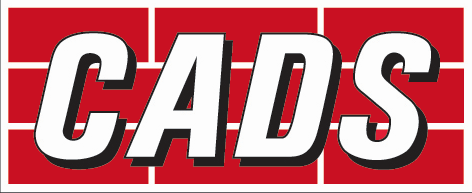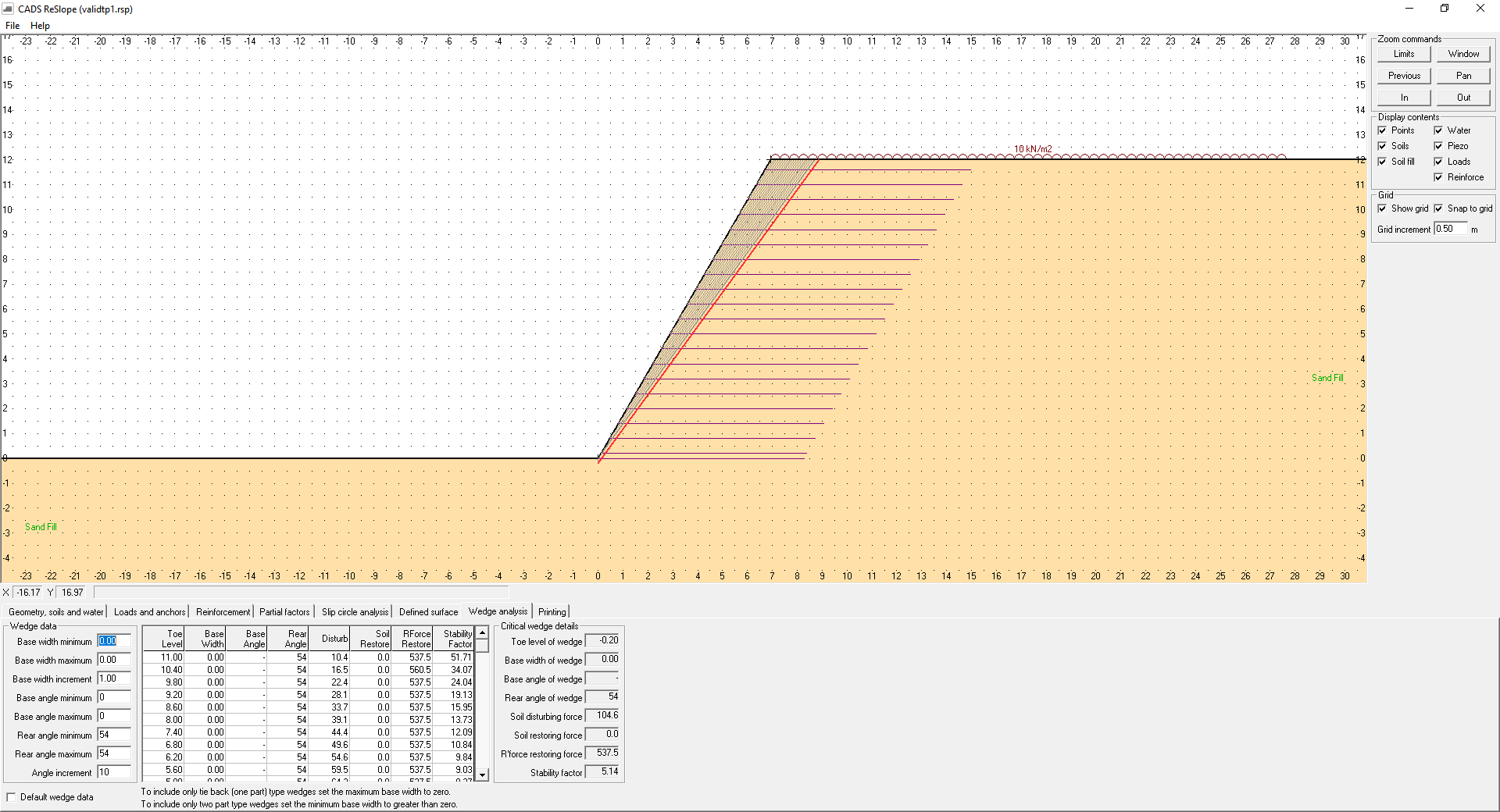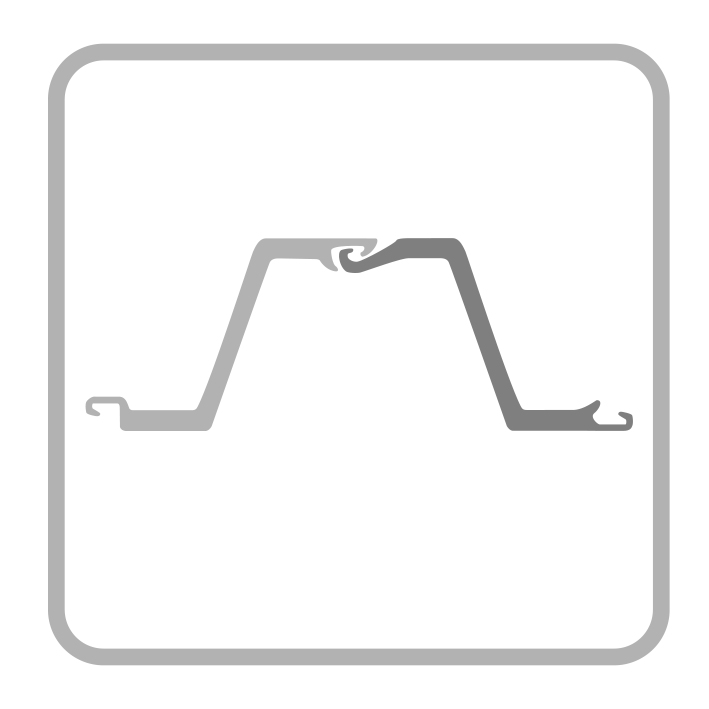Introduction
CADS ReSlope is a leading slope stability software package for calculating the factor of safety of earth slopes in accordance with both the Eurocodes and British Standards.
The basic software module deals with unreinforced slope analysis using Bishops simplified method and circular slip surfaces. An additional optional module offers further methods of analysis; piezometric grid definition and the ability to analyse non-circular slip surfaces. A further optional module adds the ability to analyse reinforced soil including the use of tie back wedge analysis and two part wedge analysis.
Enquire about ReSlope
Video demos
Download a brochure
Summary
- Natural earth slopes
- Sloping excavations
- Earth embankments
- Sheet pile or vertical pit walls
- Berms at the toe of a slope
- Explicit definition of ground anchors
- Loads at the top of an embankment such as surcharge
- Soils generator based on standard borehole descriptions
- Tie back and two part wedges bought together in single wedge analysis
- Reinforced soil including geogrids or strip reinforcement
- Seismic and earthquake loading
- Tension cracks
- Partial totally submerged embankments
- Line load at any point
Full description
Soil and water profiles are easily defined either by manual input of coordinates into a spreadsheet or by graphically digitising points on the screen with a mouse. Points can subsequently be manually or graphically moved, added or deleted.
Both Eurodes and British Standards are supported
- Bishop’s simplified (moment equilibrium)
This is a method presented by Bishop as a general slope stability solution. It is the default method used by the software and is suitable for most slope stability calculations. - Fellenius (Swedish method of slices)
This is a simple method of analysis in which all interslice forces are ignored and the factor of safety is based on rotational equilibrium (force equilibrium is not satisfied). This method has no benefit for modern computer analysis and is included in this software mainly to assist the user to compare results to hand calculations. The factor of safety produced is always conservative. - BS8006 method
This method is presented in BS8006 as a slip circle method to be used in designing reinforced soil slopes and walls. It is essentially Bishop’s simplified method but contains an additional factor described as a moment correction factor. - Janbu simplified (force equilibrium)
Generally this method makes the same assumptions and simplifications as Bishop’s method with regard to forces on a slice. The difference is that this method solves for circle stability using horizontal force equilibrium rather than moment equilibrium. - Rigorous solution (moment and force equilibrium)
The principal benefit of this method is that it can be applied to non-circular failure surfaces, as moment equilibrium is not required.
Multiple layers of soil with varying properties can be entered. Required values are:
- Density to calculate the total vertical overburden at any point below ground surface level
- Phi values in degrees
- Cohesion as kN/m2
- Ru, a ratio of pore water pressure to total overburden pressure. Used in the past when a more simplified empirical approach was favoured. It is included to check published results or results of other software.
- Suction, or negative pore pressure. Used mainly in the analysis of temporary slopes
This form shows the current values of all of the partial factors used by CADS ReSlope. Users can either use the default values or edit them to suit their projects. The two buttons at the base of the list allow the user to reset default values appropriate to ultimate limit state and serviceability limit state analysis to BS8006.
Using a simple data entry dialog, the user can choose between several analysis options (the actual choice depends on the modules purchased). The dialog is also used to enter the extent and increment of the generated grid of circles. It is also possible to allow the software to automatically extend this grid to the worst coordinate producing the minimum stability factor. Other options allow the user to specify if circles are to pass through one unique coordinate such as the toe of an embankment or to have a constant or varying radius. Another option is to define a tangential plane through which all circles pass. The results include a grid of stability factors at each circle centre, as well as the coordinate and stability factor of the critical circle.
If the user requires a non-circular slip surface then it can be prescribed in combination with the simplified method of analysis. The surface can be input either as a series of X,Y points entered manually into the dialog, or by digitising the points on the screen.
A selection of loads can be applied either to the soil surface or at a specified height and horizontal offset within the soil. Types of loading that can be applied include surcharge, line and lateral loads.
Maximum and minimum X and Y grid points are entered into a dialog along with an incremental value to generate the overall grid points. The head of water at each grid point is then defined for each point on the grid. The elevation represents the top level of water that would be found if a piezometer was installed at that point on the grid.
CADS ReSlope can be used to check the stability of reinforced soils using two types of material, geogrid and steel strip used in filled reinforced earth structures. The geogrids are not entered as single layers but are defined as blocks of reinforcement which the software then automatically converts to individual layers. Another feature of the software is that it will automatically detect the intersection between the ground level and the reinforcement layers so that all that is needed is a length of grid. All of these features save time and encourage buildable solutions. There are 2 methods of stability analysis for reinforced soils. Tie back wedge analysis for walls and two-part wedge analysis for steep embankments.
















